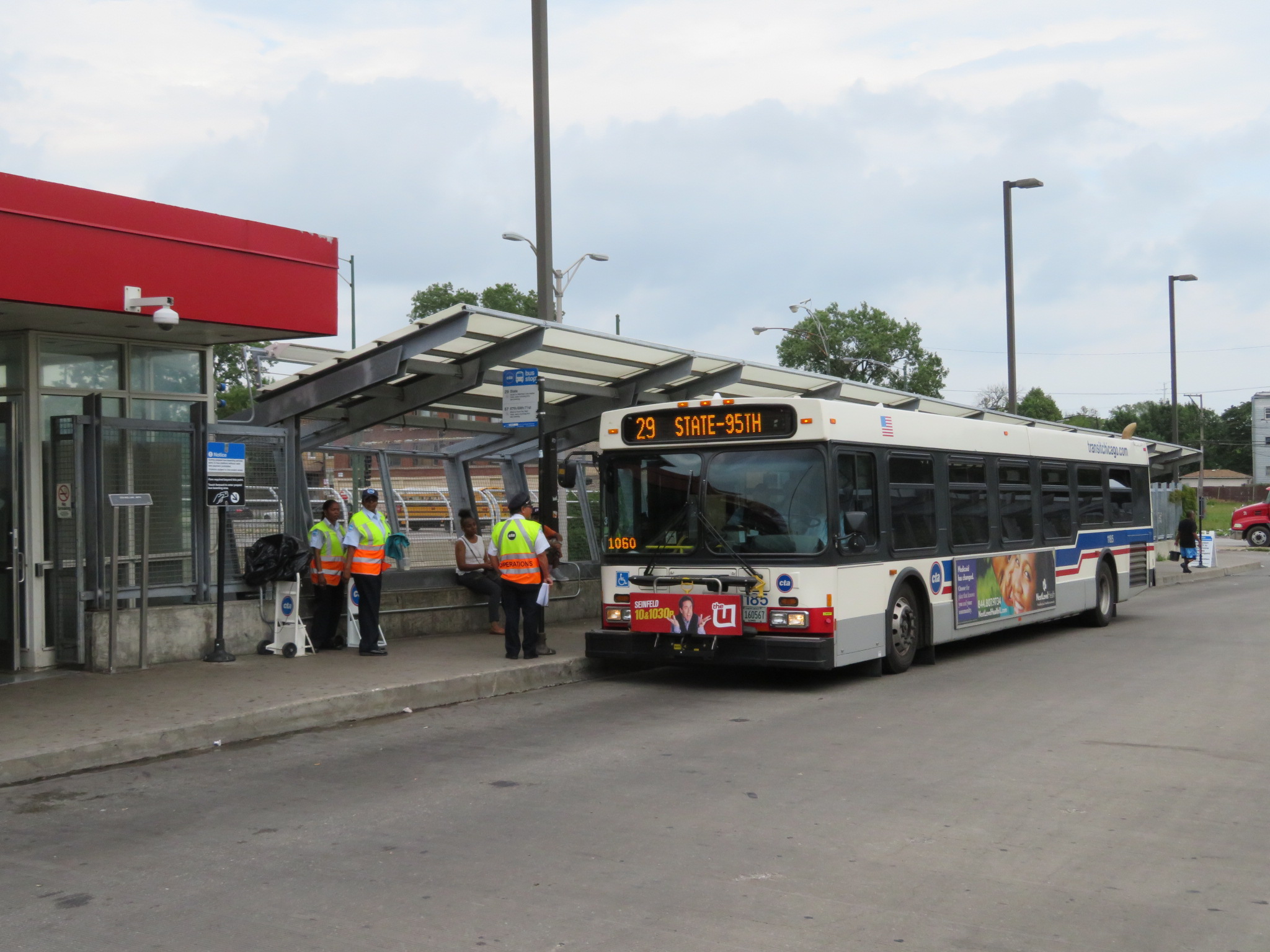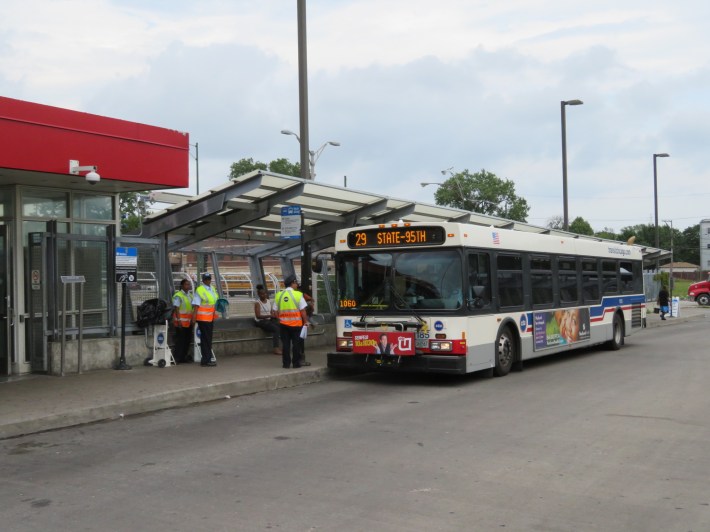The Chicago Transit Authority is testing a prepaid boarding system during weekday rush hours at a few of its busiest stops along major routes to see if it will improve travel times. So far, prepaid boarding involves the customer paying their fare on a mobile Ventra fare collection device at the bus stop before boarding the bus.
The CTA began testing this method in June 2016 at the Blue Line’s Belmont Station in Avondale during evening rush hours. The prepaid boarding area is at the south side of the station, at the westbound bus stop for the #77 Belmont bus. Customers line up pay their fare at the staffed card reader and then queue up in a fenced-in area before boarding the bus through both the front and rear doors. The CTA says this method saves an average of 38 seconds in “dwell” time per bus boarding and they have received positive feedback from customers, so they’re continuing the pilot.
The transit agency conducted a similar test project downtown from September to December 2016 during the p.m. rush at the Loop Link bus rapid transit system’s busy Madison/Dearborn station. This stop is served by several high traffic bus routes such as the #J14 Jeffery Jump, #20 Madison, #56 Milwaukee and the #60 Blue Island-26th Street buses. The CTA says this method saved an average of 16 seconds in dwell time per bus boarding.

On June 26 the CTA launched prepaid boarding pilots at two more locations, the southbound bus stop at Inner Lake Shore Drive & Belmont Avenue in Lakeview and the westbound bus stop at the 69th Street Red Line Station in Greater Grand Crossing. The tests are expected to last at least four months.
The North Side location is the last local stop before the buses enter the Outer Drive and run express to downtown. It’s served by the #135 Clarendon/LaSalle Express and the #146 Inner Drive/Michigan Express.
Decreased dwell time at the Lakeview pilot should benefit not only CTA riders but also private vehicle drivers who share the road with these buses. A Lakeview resident named Jason told me that having customer pay before they board does seem to be slightly shortening his commute.
The Greater Grand Crossing bus stop is located along a service drive on the south side of the ‘L’ station. There are several bus routes that serve this station along this service drive, but prepaid boarding is only being tested at the stop that serves the #29 State bus, which heads south to end of the Red Line at 95th/Dan Ryan, and the #67 67th-69th-71st Streets bus, which travels west to Ford City Mall.
The test will likely help people board the #29 and #67 more quickly after transferring from the ‘L’ or other buses at this busy location. The only anticipated challenge will involve making sufficient space along the sidewalk between the bus lane and the station for a queue without disrupting the flow of pedestrian traffic.
Another downside to the prepaid boarding pilots seems to be the lack of an easy cash payment option, since the mobile fare readers only work for Ventra cards. If you only have cash, you can buy a fare card or single-ride ticket (which costs $3, rather than the usual $2 bus fare) at Ventra machines at the Belmont Blue Line station and the 69th Street Red Line station. (There is a Walgreens next to the Madison/Dearborn stop where one could buy fare media during the Loop Link test.) But the bus stop at Lake Shore Drive and Belmont doesn’t have a Ventra machine nearby -- it’s just a regular bus stop.
There’s also the issue that the current pilots require at least one CTA employee to be present, which is costly in terms of work hours. If prepaid boarding is to be implemented on a system-wide basis, and ideally during all times, not just rush hours, it may be necessary to come up with a system that doesn’t require an attendant at every station. Other cities have implemented prepaid boarding by having riders enter the paid area via turnstiles, or having them purchase tickets at kiosks at the stops, which are occasionally checked by inspectors who enter buses on a sporadic basis.
Hopefully the tests in Lakeview and Greater Grand Crossing will result in significant time savings and positive feedback from riders, like the Avondale one did. Overall, the prepaid boarding program looks promising, but the CTA will need to analyze future locations carefully to make sure that the program will be successful at a particular site. I look forward to seeing what improvements will come next.






